Right ascension 15 17 14.4 Type SA0(r) | Declination +21° 35′ 08″ Magnitude 16 Apparent magnitude (V) 16 | |
Redshift 7007127400000000000♠12740±50 km/s Distance 7002612800000000000♠612.8±9.4 Mly (7024579798817557685♠187.9±2.9 Mpc) Size 7021114474838718227♠121±4 kly in diameter Similar Sombrero Galaxy, Cartwheel Galaxy, NGC 3370, Black Eye Galaxy, NGC 1512 | ||
Hoag's Object is a non-typical galaxy of the type known as a ring galaxy. The galaxy is named after Arthur Hoag who discovered it in 1950 and identified it as either a planetary nebula or a peculiar galaxy with eight billion stars.
Contents
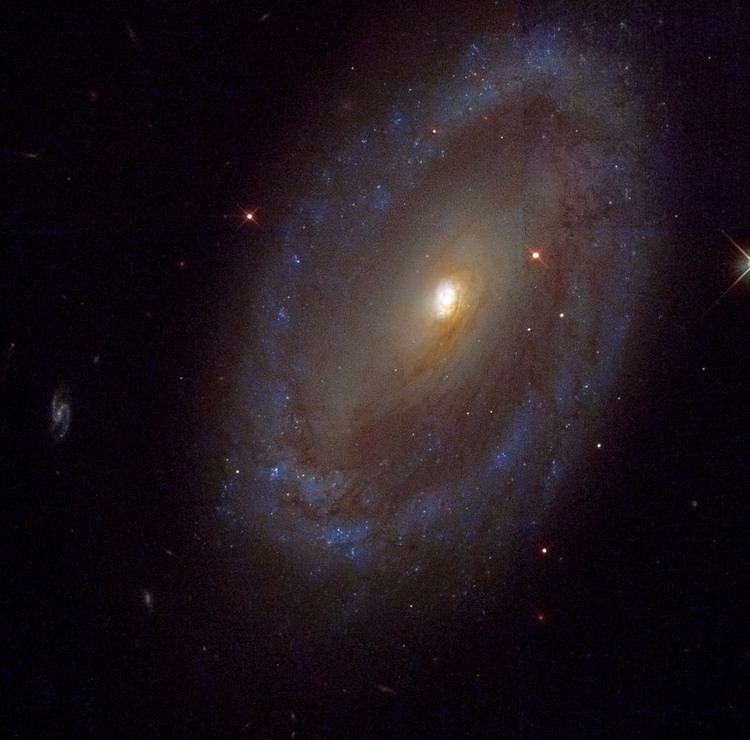
Synthillator1 s journey to hoag s object
Characteristics
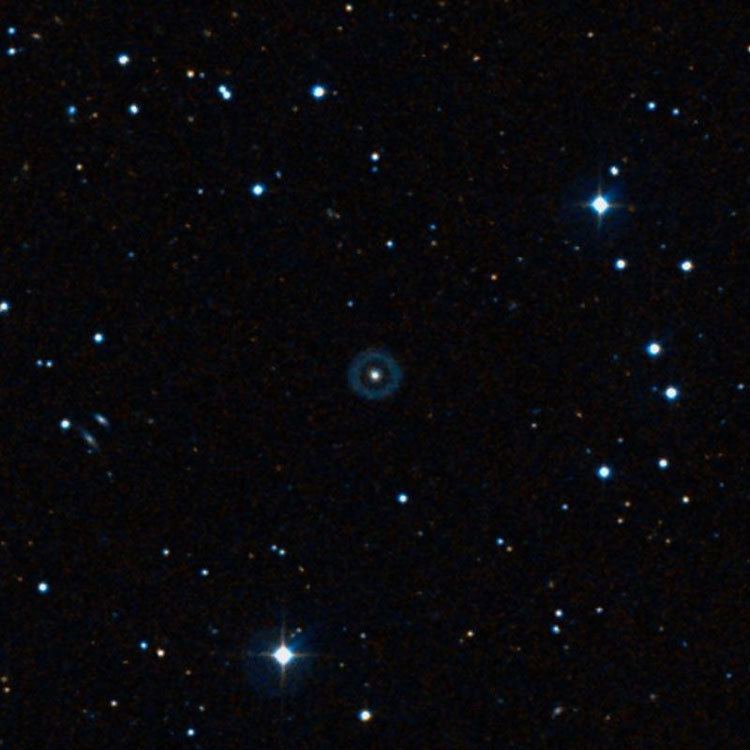
A nearly perfect ring of young hot blue stars circles the older yellow nucleus of this ring galaxy c. 600 million light-years away in the constellation Serpens. The diameter of the 6 arcsecond inner core of the galaxy is about 7020160832418033873♠17±0.7 kly (7020163540911817761♠5.3±0.2 kpc) while the surrounding ring has an inner 28″ diameter of 7020709554785443560♠75±3 kly (7020765248040203863♠24.8±1.1 kpc) and an outer 45″ diameter of 7021114474838718227♠121±4 kly (7021123118535500540♠39.9±1.7 kpc), which is slightly larger than the Milky Way Galaxy. The gap separating the two stellar populations may contain some star clusters that are almost too faint to see. As rare as this type of galaxy is, another more distant ring galaxy (SDSS J151713.93+213516.8) can be seen through Hoag's Object, between the nucleus and the outer ring of the galaxy, at roughly the one o'clock position in the image shown here. The galaxy spans about 100,000 light years
History and formation
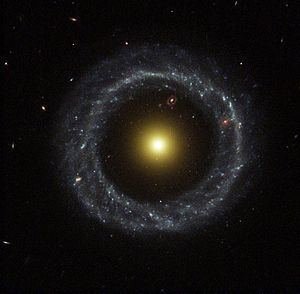
Even though Hoag's Object was clearly shown on the Palomar Star Survey, it was not included in either the Morphological Catalogue of Galaxies, the Catalogue of Galaxies and Clusters of Galaxies, or the catalogue of galactic planetary nebulae.
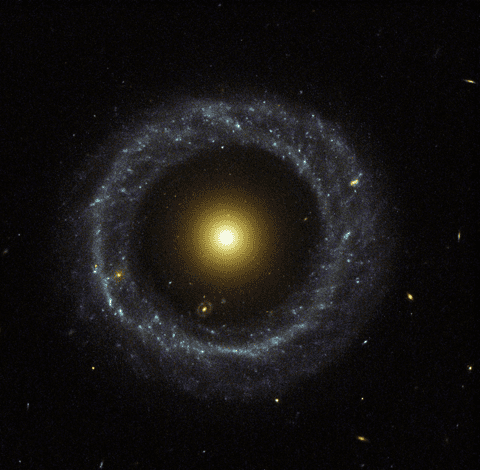
In the initial announcement of his discovery, Hoag proposed the hypothesis that the visible ring was a product of gravitational lensing. This idea was later discarded because the nucleus and the ring have the same redshift, and because more advanced telescopes revealed the knotty structure of the ring, something that would not be visible if the ring were the product of gravitational lensing.
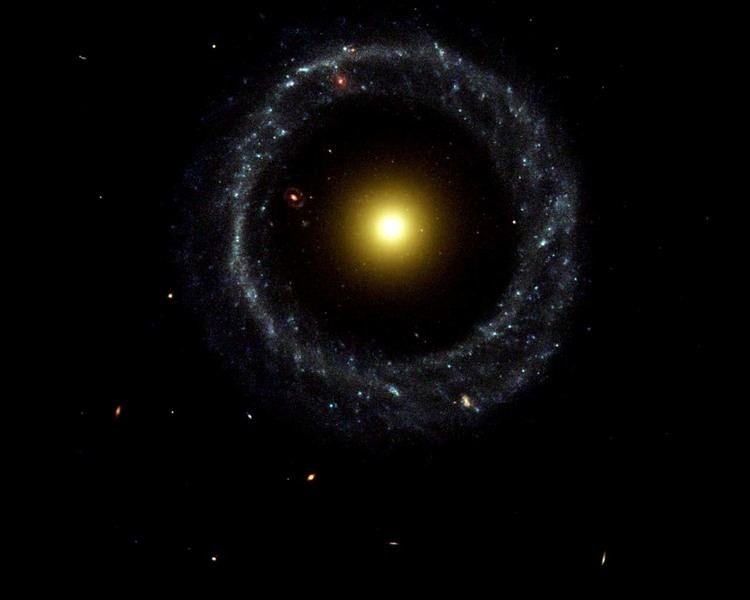
Many of the details of the galaxy remain a mystery, foremost of which is how it formed. So-called "classic" ring galaxies are generally formed by the collision of a small galaxy with a larger disk-shaped galaxy. This collision produces a density wave in the disk that leads to a characteristic ring-like appearance. Such an event would have happened at least 2-3 billion years in the past, and may have resembled the processes that form polar-ring galaxies. However, there is no sign of any second galaxy that would have acted as the "bullet", and the likely older core of Hoag's Object has a very low velocity relative to the ring, making the typical formation hypothesis quite unlikely.
Noah Brosch suggested that Hoag's Object might be a product of an extreme "bar instability" that occurred a few billion years ago in a barred spiral galaxy. Schweizer et al claim that this is an unlikely hypothesis because the nucleus of the object is spheroidal, whereas the nucleus of a barred spiral galaxy is disc-shaped, among other reasons. However, they admit evidence is somewhat thin for this particular dispute to be settled satisfactorily. Interestingly, a few galaxies share the primary characteristics of Hoag's Object, including a bright detached ring of stars, but their centers are elongated or barred, and they may exhibit some spiral structure. While none match Hoag's Object in symmetry, this handful of galaxies are known to some as Hoag-type galaxies.
Structure
Noah Brosch and colleagues showed that the luminous ring lies at the inner edge of a much larger neutral hydrogen ring.
